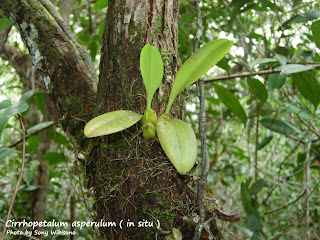 |
Synonyms: Alismorchis angraeciflora (Rchb.f.) Kuntze 1891; Alismorchis diploxiphion (Hook.f.) Kuntze 1891; Alismorchis furcata O.Ktze. 1891; Alismorchis gracillima (Lindl.) Kuntze 1891; Alismorchis veratrifolia [Willd.] Kuntze 1891; Amblyglottis veratrifolia Blume 1825; Bletia quadrifida Hook.f. 1890; Calanthe angraeciflora Rchb.f. 1876; Calanthe bracteosa Rchb.f. 1882; Calanthe brevicolumna Hayata 1911; Calanthe catilligera Rchb.f. 1857; Calanthe celebica Rolfe 1899; Calanthe comosa Rchb. f. 1847; Calanthe corymbosa (Thouars) Lindl. 1862; Calanthe diploxiphion Hook.f. 1890; Calanthe furcata Bateman ex Lindley 1838; Calanthe furcata f. albolineata K.Nakaj. in ?.; Calanthe furcata f. albomarginata K.Nakaj. 1969; Calanthe furcata f. brevicolumna (Hayata) M.Hiroe 1971; Calanthe furcata f. textori (Miq.) M.Hiroe 1971; Calanthe gracillima Lindl. 1855; Calanthe matsamurana Schltr. 1906; Calanthe megalophora Franch. 1888; Calanthe nephroglossa Schltr. 1911; Calanthe orthocentron Schltr. 1912; Calanthe perrottetii A. Rich. 1841; Calanthe proboscidea Rchb.f. 1884; Calanthe pubescens Ridl. 1923; Calanthe rubicallosa Masam. 1975; Calanthe triplicata f. albomarginata (K.Nakaj.) K.Nakaj. 1973; Calanthe triplicata var. angraeciflora (Rchb.f.) N.Halle 1977; Calanthe triplicata var. gracillima (Lindl.) N.Hallé 1998; Calanthe triplicata [Willem.]Ames 1907 var minahassae Schltr. 1925; Calanthe veratrifolia [Willd.]R. Br. 1823; Calanthe veratrifolia var. australis Linden 1851; Calanthe veratrifolia var denisimma J.J.Sm. 1931; Calanthe veratrifolia [Willd.]R. Br. 1823 var dupliciloba J.J.Sm. 1922; Calanthe veratrifolia var incurvicalca J.J.Sm. 1931; Calanthe veratrifolia var. kennyi F.M.Bailey 1912; Calanthe veratrifolia [Willd.]R. Br. 1823 var lancipetala J.J.Sm. 1930; Calanthe veratrifolia var. stenochila Rchb.f. 1897; Calanthe veratrifolia var timorensis J.J.Sm. 1934; Flos triplicata Rumph 1750; Limodorum ventricosum Steud. 1821; Limodorum veratrifolium Willd. 1805; Orchis triplicata Willem. 1796; Paracalanthe megalophora (Franch.) Miyabe & Kudô 1932
Found from Mauritus, Madagascar, Seychelles, Assam, eastern Himalayas, lower India, Sri Lanka, Myanamar, Thailand, Malaysia Laos, Cambodia, south China, Vietnam, Borneo, Java, Lesser Sunda Islands, Moluccas, Philippines, Sulawesi, Sumatra, Bismark Islands, New Guinea, Solomon Islands, Norfolk Island, New South Wales, and Queensland Australia, Fiji, New Caledonia, Samoa, Vanuatu, Wallis & Futna, Marquesas, Santa Cruz Islands, Caroline Islands, the Marianas Islands, Taiwan, Ryukyu Islands.
Terrestrial, in humid forests in crevasses in karst limestone with rich humus soil in humid, shady conditions at elevations of 500 to 1500 meters. Psuedobulbs carrying 3 to 6, ovate-lanceolate, to elliptic-lanceolate, ribbed, blooms from a mature pseudobulb, more than 100 cm long, racemose inflorescence with successive opening flowers that are congested at the apex and much longer than the leaves.
Flower: 3 cm long and 2,2 cm wide, Long-lasting flowers, and the last flowers will fall on the fourth to fifth month. 3 cm long
Because it is often found living on rocks, it called "Anggrek Batu" (Rock Orchid) by some local communities in Kalimantan.
Indonesia:
Anggrek teristris, di hutan lembab, di ceruk batuan cadas gamping dengan tanah lembab kaya humus, kondisi teduh pada ketinggian 500 sampai 1.500 meter. Umbi semu membawa 3 sampai 6 daun berbentuk lanset bulat telur hingga elips-lanset, berusuk, bunga muncul dari pseudobulb dewasa dengan tangkai bunga sepanjang lebih dari 100 cm, yg berbentuk gugusan dengan bunga membuka berturut-turut yang padat di puncak dan lebih panjang daripada daun.
Panjang bunga 3 cm dengan lebar 2,2 cm, tahan lama, bunga-bunga terakhir gugur pada bulan keempat hingga bulan kelima.
Karena sering ditemukan hidup pada bebatuan, anggrek tersebut dinamakan "Anggrek Batu" oleh sebagian masyarakat di Kalimantan.















